If you’ve ever enjoyed watching professional riders in action, you’ll understand that attending your first Grand Tour feels like a momentous occasion.
Technically, this year’s Vuelta Femenina wasn’t my daughter’s first rodeo; she actually attended the Tour de France in 2014 when it came to Yorkshire. Although if you’re quick with math, you’ve probably already figured she was just a couple of months old and spent the whole time asleep or feeding in a sling.
This time around, however, on the eve of her eleventh birthday, she was wide-eyed at the spectacle, absorbing every moment of the race and the carnival surrounding it.
She’s seen a lot of bike racing on TV and has even started to dabble herself, so she’s well-versed in the main event, but being so up close and personal gave her (and me) a whole new perspective, reminding me why attending your first Grand Tour is so special.
Yes it really is (almost) all access all areas
(Image credit: Hannah Bussey)
Questions my 10 year old asked
Are we allowed to go there?
Is a bike race really access all areas?
This is by far one of the best things about being a cycling fan: the ability to access so much of the behind-the-scenes racing. My daughter was so surprised that we could walk down the middle of closed roads, head right up to the team buses, and get super close to their bikes and other pieces of equipment.
The teams themselves will often have a little barrier to stop fans from literally tapping riders on the shoulders when warming up, but other than that, you can get within a meter or so of the most famous riders in the world.
Heading to the start location of a race is also highly recommended, just for the freebies alone. She couldn’t believe it when she came away with caps, food, sweets, drinks, and all sorts of other ‘race merch,’ as she called it.
She kept asking, “Are you sure we’re allowed?” all day, and it’s an absolute parent’s joy to keep saying ‘yes’ for once!
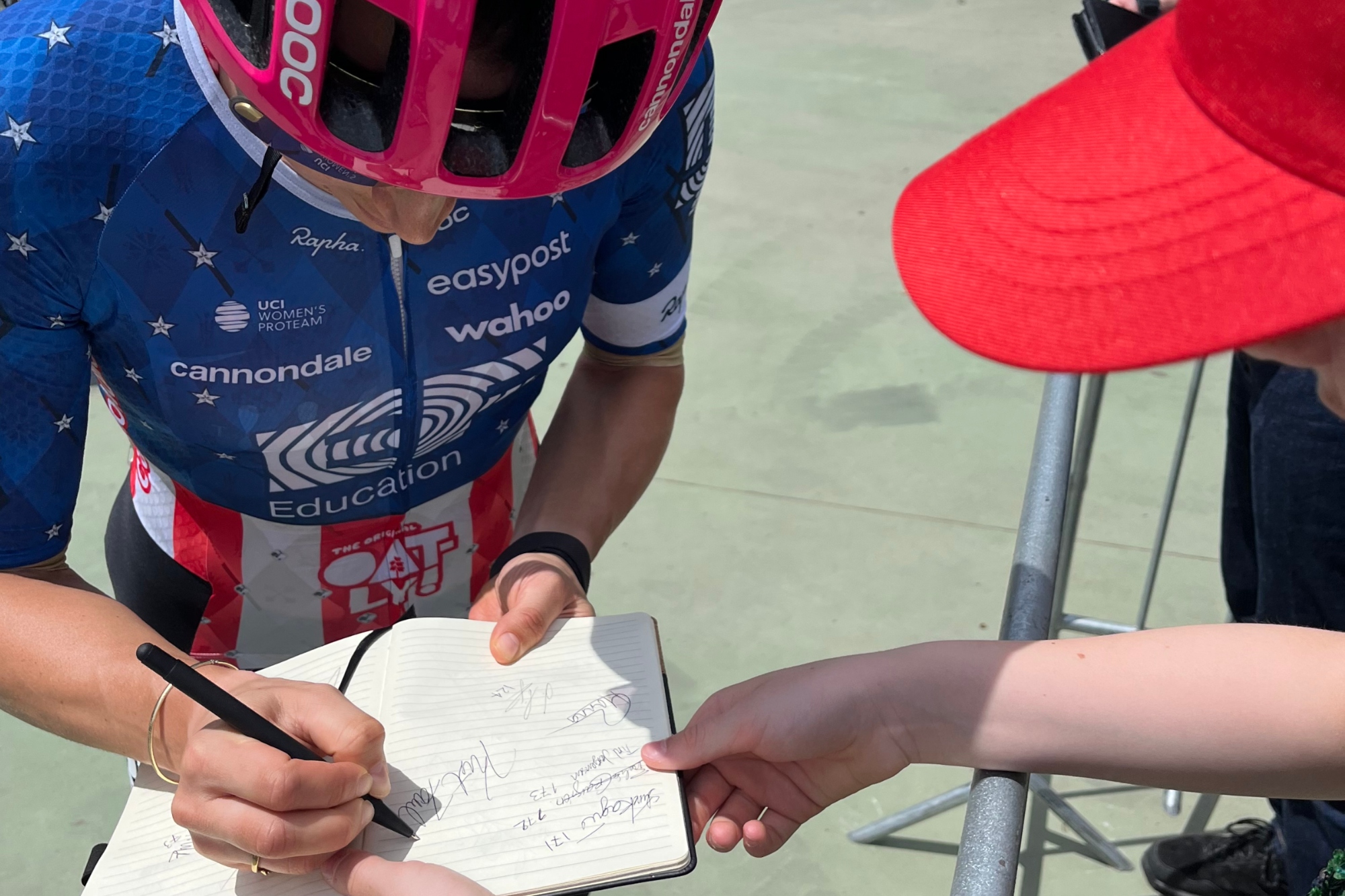
Olympic women’s road race champion, Kristen Faulkner, signs a my Daughter’s autograph book
(Image credit: Hannah Bussey)
Can you sign my book please?
A personnaly written note in your autograph book – no problem
We intentionally chose to go to the Vuelta Femenina, not only because it’s smaller than many of the men’s Grand Tours, which creates a much more intimate and low-key team zone, but also for the inspiration of seeing women race bikes.
These two factors combined allowed my daughter to walk right up to the riders and ask them to sign her notebook.
She came away with nearly 50 autographs from the world’s best female riders, such as Kristen Faulkner and Demi Vollering including previous stars of the pro peloton like Hannah Barnes and Ina-Yoko Teutenberg, who is now Directeur Sportif for Lidl–Trek. The latter was incidentally talking to ex-world champion Michael Rogers (who is now a Management Assistant at the same team). I also suggested getting his signature too, but my daughter had no interest as her autograph book was for women only!
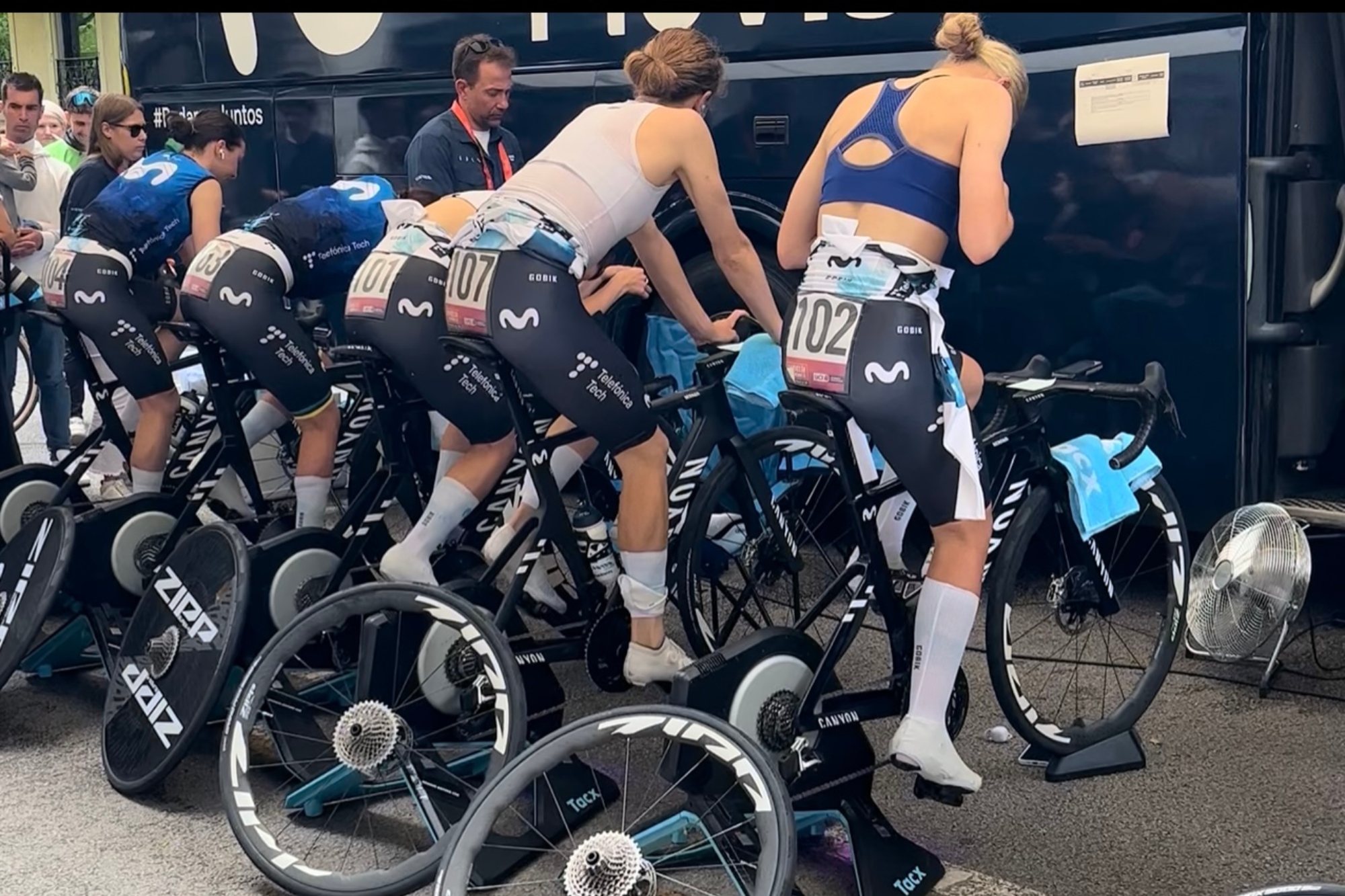
Movistar warming up pre Team Time trial
(Image credit: Hannah Bussey)
What’s that up their nose?
Why have they got tissue up their noses?
As an adult, you forget how you know things, which means you don’t think twice about seeing a row of seven women on smart trainers with cotton wool stuffed in each nostril. Even writing it down makes me realise that, to a 10-year-old, it must have been a bizarre sight.
I explained that some riders soak the cotton wool in menthol oil before going deep on a ride, as it helps provide a perceived boost in breathing due to its cooling sensation. It’s a bit like when you have a cold and use Olbas oil as a decongestant. She shrugged her shoulders and made a bit of a face. She still thinks it’s weird.
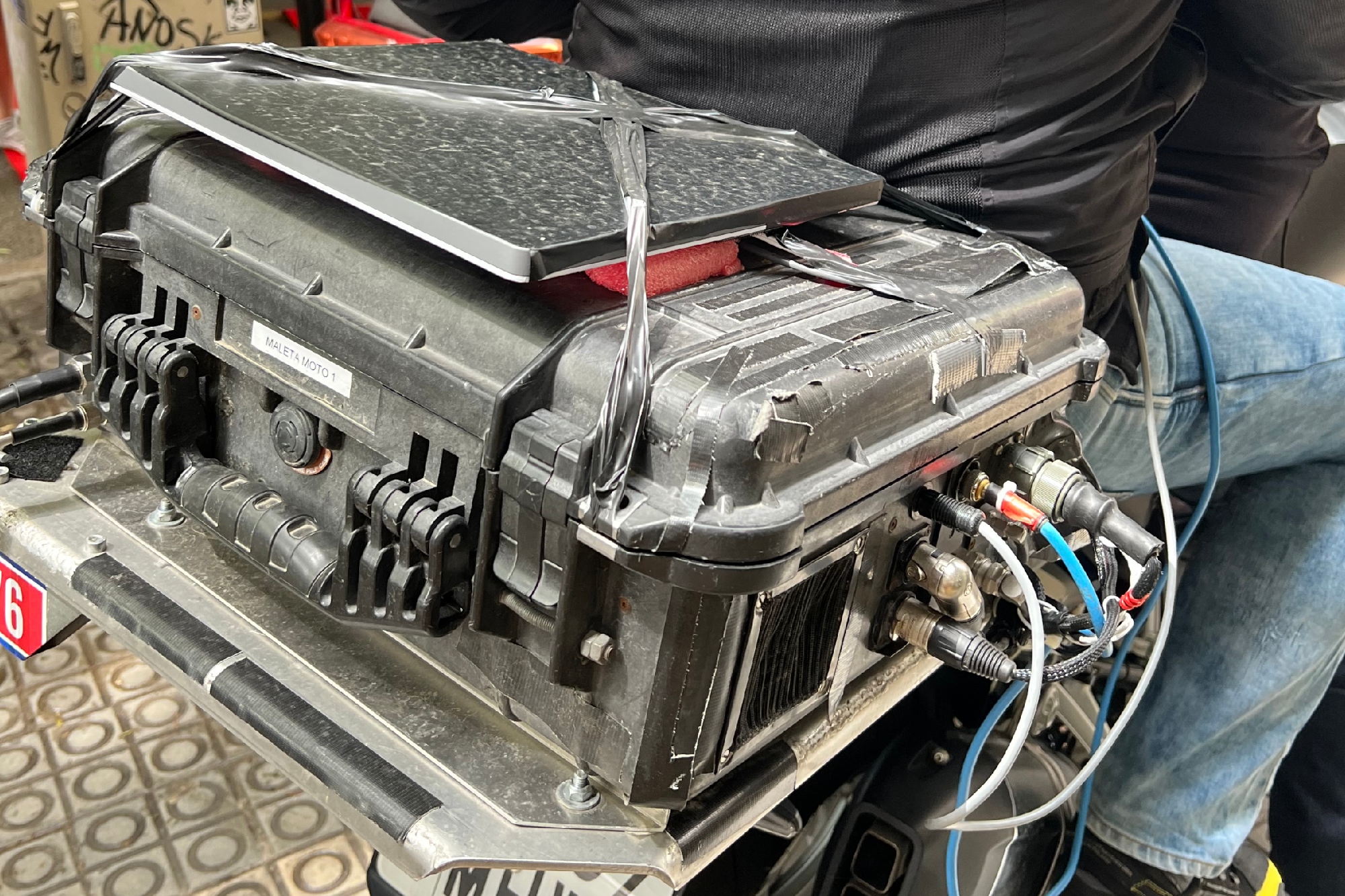
The box of electronics on the camera bike is pure alchemy
(Image credit: Hannah Bussey)
What’s that on the back of that motorbike?
Why is there a sponge under that thing?
I’ve never thought much about how the images from alongside the riders mid-race get into our living room, till my Daughter asked. I’m aware of a camera person on the back of a motorbike, but I hadn’t considered the technology behind it until my 10-year-old pointed out the pink sponge.
I am still quite in the dark about what is going on back there, and I’m not sure why I assumed it would be sleeker. However, I wasn’t expecting the junkyard-model finish to such an important bit of what is clearly, custom made technology.
I’m sure the pink sponge was related to vibration damping, and the tape was sufficiently secure; it just looks like something your five-year-old would present to you as a rocket.

FDJ Suez’s mobile washing machine
(Image credit: Hannah Bussey)
What’s that washing machine doing there?
Why did they bring that to the race?
I hadn’t appreciated how out of place a washing machine would look to a 10-year-old at a bike race. But it’s a very valid question when you’ve only ever seen one in a house or launderette.
It’s probably one of the most vital pieces of machinery a team needs at a Grand Tour. With the chances of staying in one place long enough to find a laundrette slim, the ability to wash and dry kit immediately after a race means that the cost and volume of team clothing can be kept to a minimum. It also helps reduce germs and bacteria, lowering the team’s chances of illness.
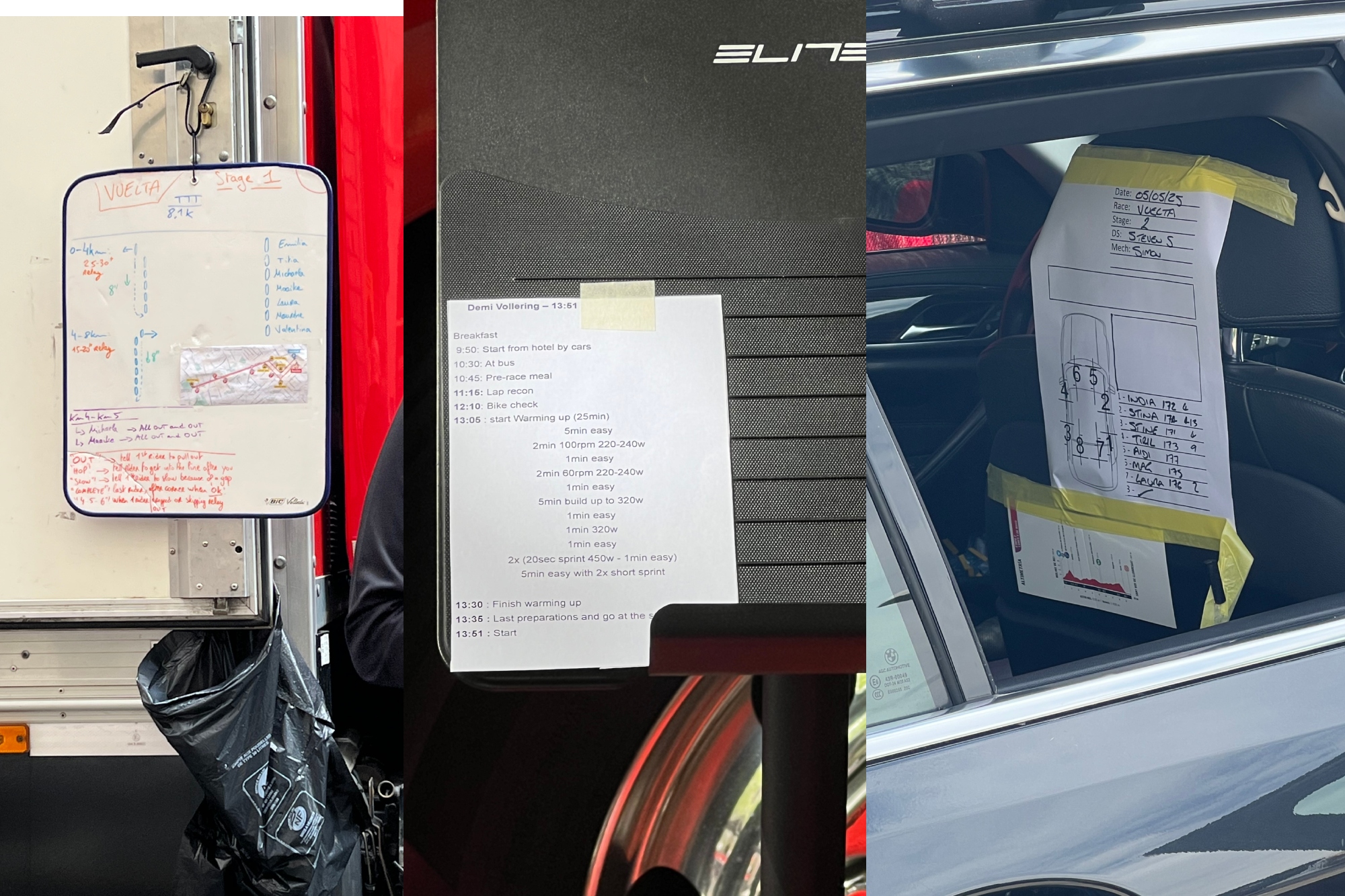
(Image credit: Hannah Bussey)
What does that mean?
White boards, stickers, wierd numbers next to names scrawled on pieces of paper – but what does it all mean?
The various bits of writing stuck to objects with tape or string must have seemed like some otherworldly code to my daughter. The elementary methods of communicating team plans were surprisingly simple, even for my 10-year-old.
However, she agreed that writing things down would be too complicated, considering the team is likely to have several nationalities on board, all speaking different languages. Numbers and drawings are much more effective for sharing a race strategy, a stage profile, or even indicating where someone’s spare bike is kept on the roof of a team car.
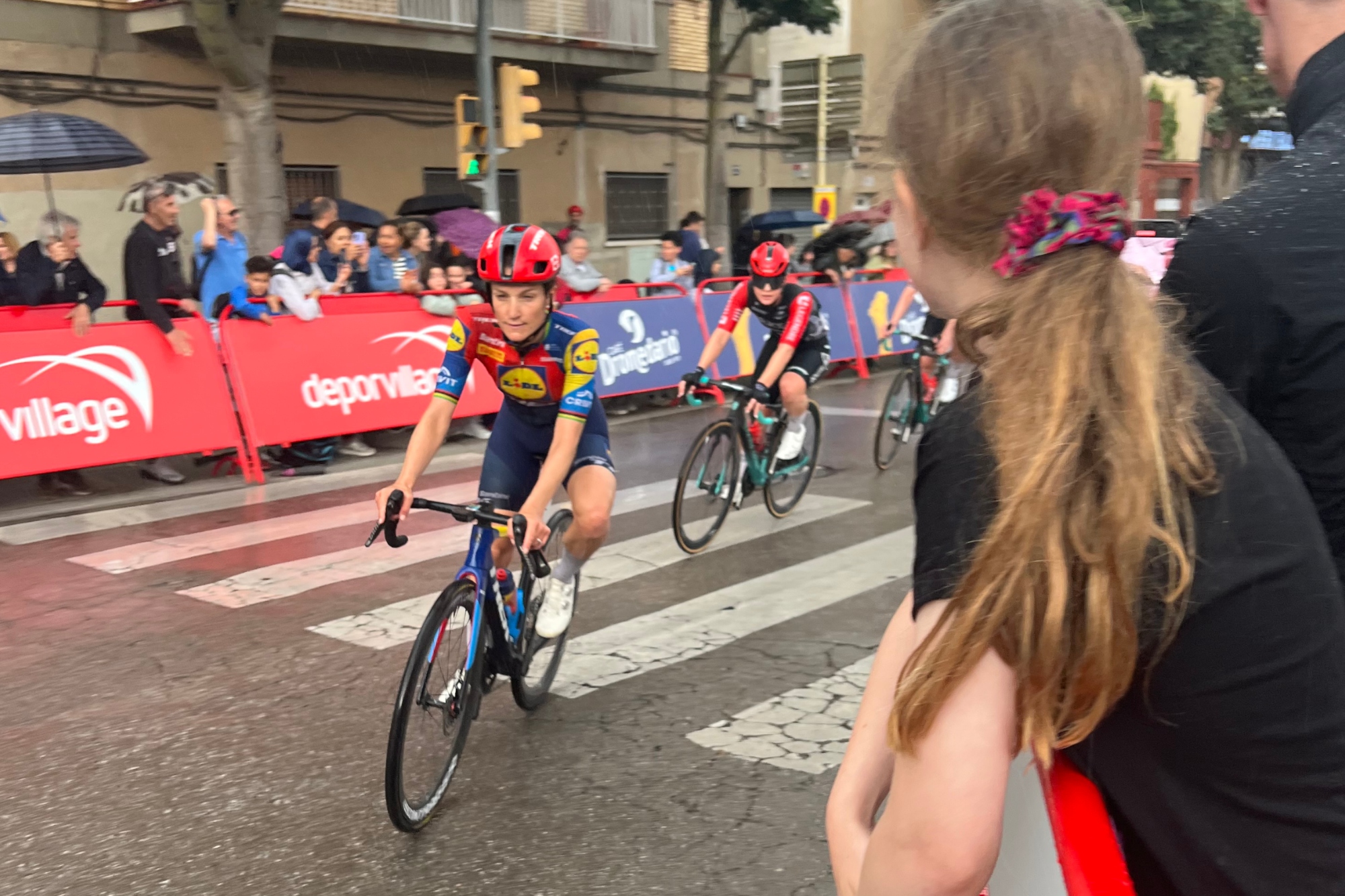
Lizzie Deignan on her bike being cheered on by my daughter
(Image credit: Hannah Bussey)
The game changing question she didn’t ask
Only after we arrived home from our Grand Tour mini-break did I realise there was one question my daughter had failed to ask the entire time we were at the Vuelta Feminina.
Not once did she ask for her tablet (we’d left it at home) or to play a game on one of her parents’ phones.
I’m not sharing this to appear smug; rather, I recognise how difficult it can be for a nearly 11-year-old child to spend four days with just her parents in a non-English-speaking city, even without owning a smartphone herself, and with minimal access to computer games.
The latest race content, interviews, features, reviews and expert buying guides, direct to your inbox!
Coming home with the desire to become a professional rider, the urge to travel again, and the wish to watch more live racing, especially women’s racing, without missing any electronics, is a game changer – and that must surely be the biggest win of the race.

